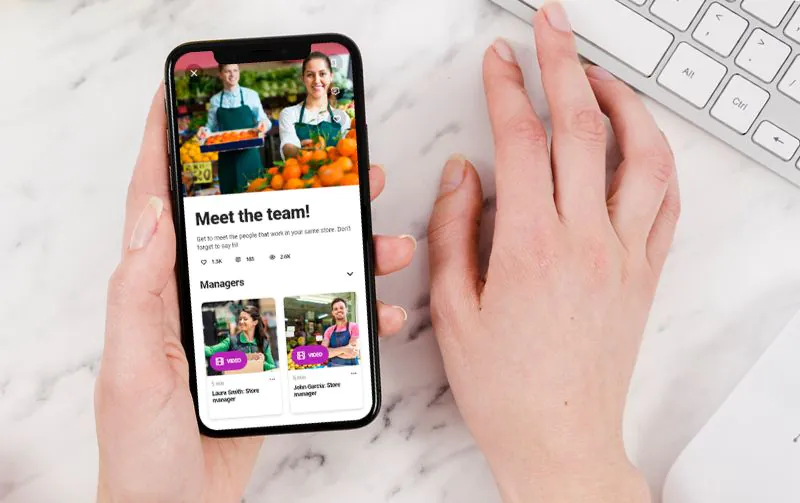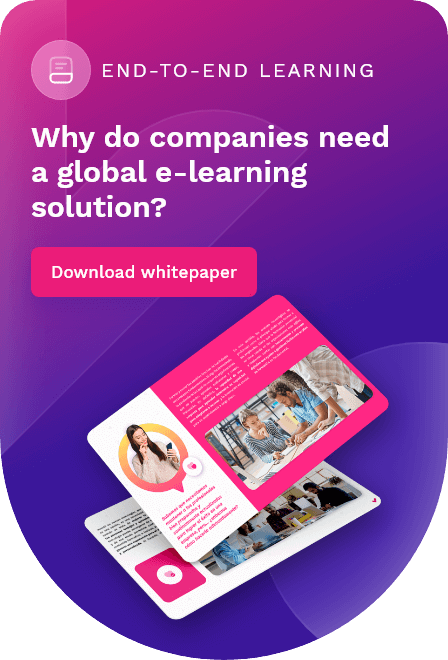Table of contents
ToggleIn recent years, more and more companies have chosen to focus on the importance of their people. After all, it’s people who are at the heart of any good organization. Prioritizing people involves implementing methods and strategies that enhance the well-being of workers, promote teamwork and foster a good working environment.
‘Bridge building’ is one of these strategies, which stimulates relationships between people, and inspires commitment to work as a team. You might be wondering what it is and how it can help improve your business. In this article we’ll discover what bridge building is, how it differs from Team Building, and how to make use of it in your company.
What is bridge building? The origin and objectives of the approach
Developed by Jordi Robert-Ribes, creator of the company Connecting Perspectives, bridge building is a communication method that encourages collaboration and aims to build relationships between different departments within a company. Its function is to set up a ‘knowledge exchange’ between sets of very different worker profiles in order to generate disruptive approaches and strategies in the workplace.
Bridge building has been proven to be one of the most effective methods to foster employee commitment and, consequently, improve team productivity and well-being. In fact, as a survey carried out by Gympass reveals, 70% of workers believe these types of measures promote better performance in their everyday work.
However, it’s also an approach that requires fluid internal communication, as this builds the safe space and environment of trust in which ideas can be shared. Accordingly, the main objective of the bridge method is to create these connections, forging links between employees from different teams to find transverse solutions to the company’s challenges.
But, if this method offers such great advantages for an organization, then why haven’t all companies implemented it? In order to implement the bridge building technique, it’s essential to start with a working environment in which diversity, trust, and collaboration prevail, and where opinions can be shared safely. It involves creating meaningful relationships between professionals of different levels – something that cannot be achieved overnight, and requires significant corporate culture work.
The phases of bridge building: sharing experiences in a collaborative environment
With a diverse and reliable business culture as its starting point, the bridge building method is built on three different phases:
Exploration phase
The exploration phase is part of a motivational talk (called an ‘Experience Talk’) where the first relationships between employees and departments are stimulated. This is the point from which employees can begin to share ideas and projects horizontally with other colleagues.
Construction phase
This phase consists of face-to-face (‘one-to-one’) meetings between employees and company managers. The objective here is for managers to understand the need for change from the ground up, so that they feel comfortable with the new working style and can pass it on to other workers.
Maintenance phase
Simultaneously, the evolution and experience of each employee within the project needs to be monitored, to analyze the state of the whole process and ensure that the set objectives are being achieved.
From Team Building to Bridge Building: the evolution in connecting teams
Another pathway to creating a collaborative and reliable work environment that has proven popular over recent years is Team Building. In fact, its objectives are remarkably similar to those of bridge building: forge a united team, create a common identity, foster relationships between colleagues and generally develop a positive attitude. So, what are the differences between these two methods? Do they complement each other?
Although they do indeed have many similarities, and certainly seek to achieve complementary goals, there is a clear difference between the two methods: Team Building activities take place outside the organization; while the dynamics of the bridge method unfold in the workspace itself, allowing relationships to grow between individuals and departments.
So, while Team Building tries to foster a more relaxed environment, bridge building seeks to break down the professional barriers between departments, with the following advantages:
- Building professional and emotional bridges between departments helps to generate more disruptive solutions.
- Ideas are shared through newly created relationships of trust, which unfold in a designated meeting space.
- Workers become more versatile thanks to the process, prepared to take on different tasks and greater responsibilities.
How to apply bridge building: The keys to building bridges between your teams
The bridge method offers the chance to create a highly stimulating professional environment based on trust, collaboration and learning, but it does require conscientious groundwork to be done beforehand, and this is something that not every corporation has been able to achieve. So, what should we take into account before starting bridge building? According to Randstad, “one of the biggest challenges when building up your organization lies in finding the best method for interdepartmental communication”. This can be achieved through the following strategies:
Identify a leader for each work group
They will be the main architects when it comes to constructing bridges between departments. It’s essential to select leaders who inspire trust amongst the rest of the employees.
Create a pleasant and satisfying work environment
Create a context in which workers dare to contribute different opinions and offer unique solutions. Measures such as training plans, social benefits or team building dynamics help to build up a work environment that favors these responses.
Use tools to stimulate communication
It’s vital to make use of tools that allow for more fluid and enjoyable internal communication between departments. Creating internal chats strengthens employee commitment to the company, and gives them direct access to information quickly and efficiently.
Apps like isEazy Engage enable news feeds so that employees can interact with and react to your organization’s communications and microcontent. But isEazy Engage goes much further than this: it comes with a wide range of features that make it a complete tool for communication, training, task management and analytics.
Enhance communication skills and creative thinking
Preparing workshops, activities or online courses facilitates the professional development of each worker, and builds their confidence in sharing ideas.
When it comes to promoting the growth of each worker, soft skills are a crucial element since they allow employees to communicate, collaborate and relate to other colleagues in a more effective and assertive way. The isEazy Skills catalog covers the key needs of each individual worker with its range of over 540 courses.
Promote ambitious work projects
Projects that require collaborative work between different departments stimulate new workflows between people from diverse sections of a company.
Develop group activities
These allow meetings to take place between employees from all different levels of the organization.
In the age of technology, people not only form the fundamental building blocks of a company, but also act as the engine that drives change. Methods such as bridge building help foster an environment in which each worker feels like an important part of the wider change taking place. What they, and the bridge building method, need to thrive is a corporate culture that truly believes in this way of working. Are you bold enough to try it in your company?















